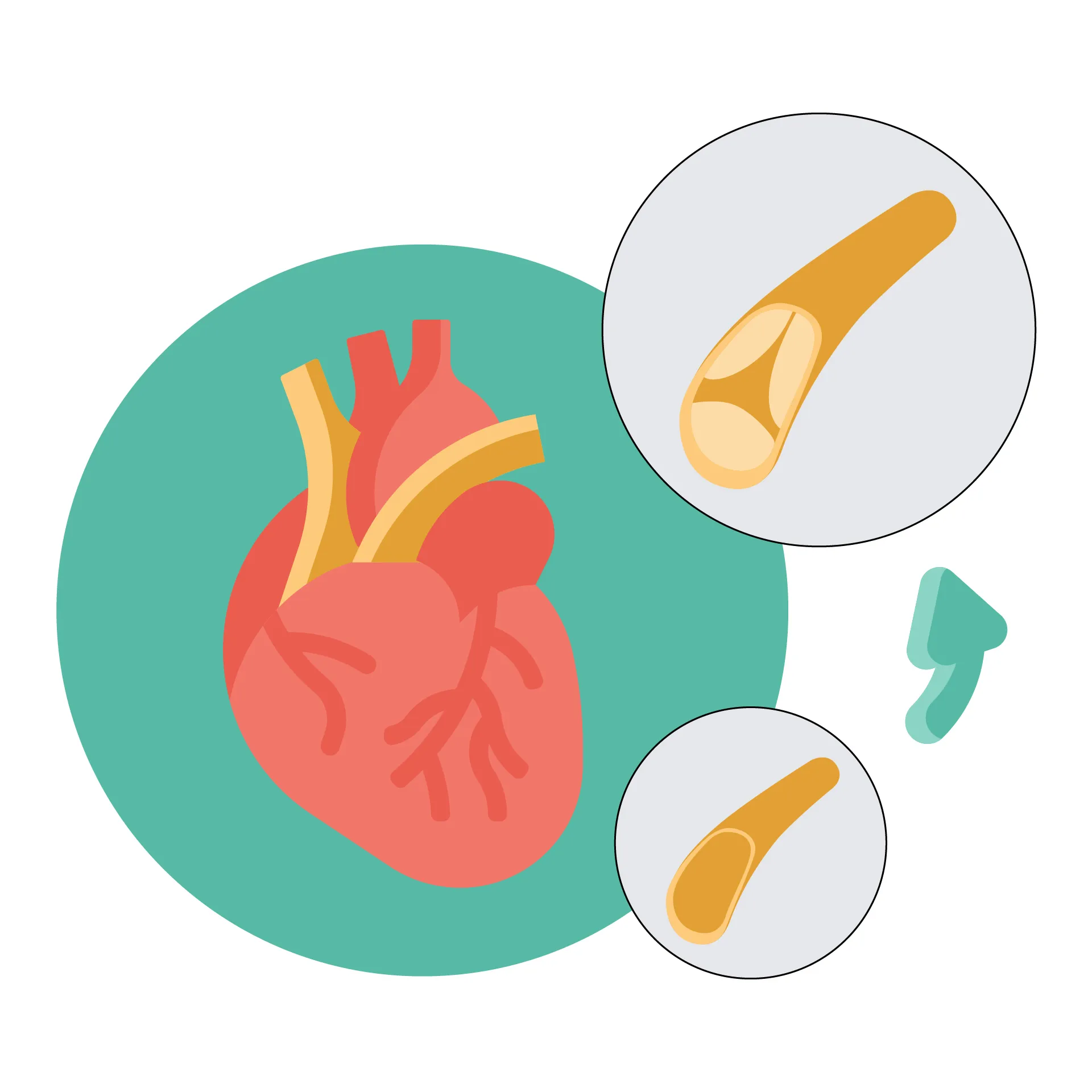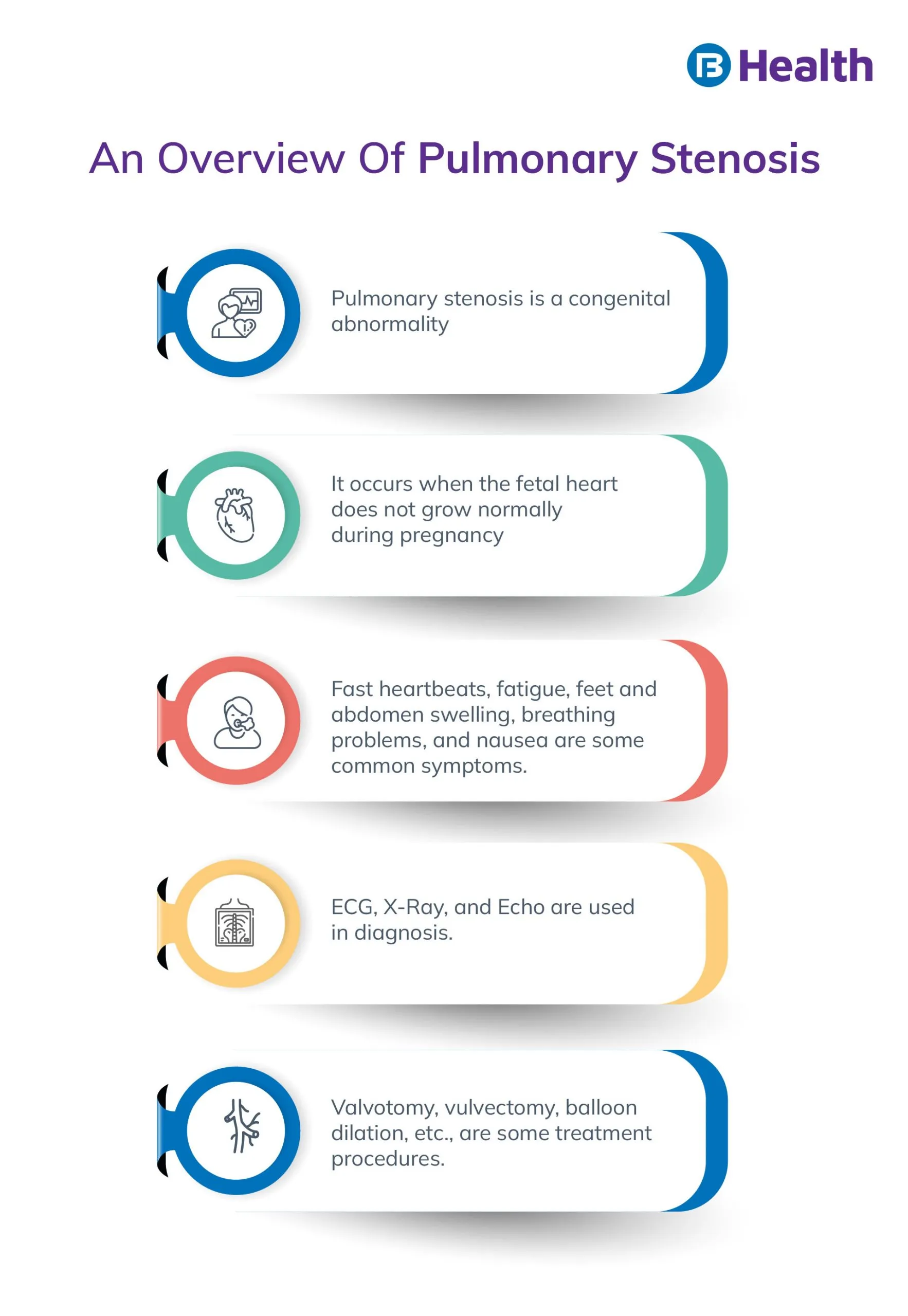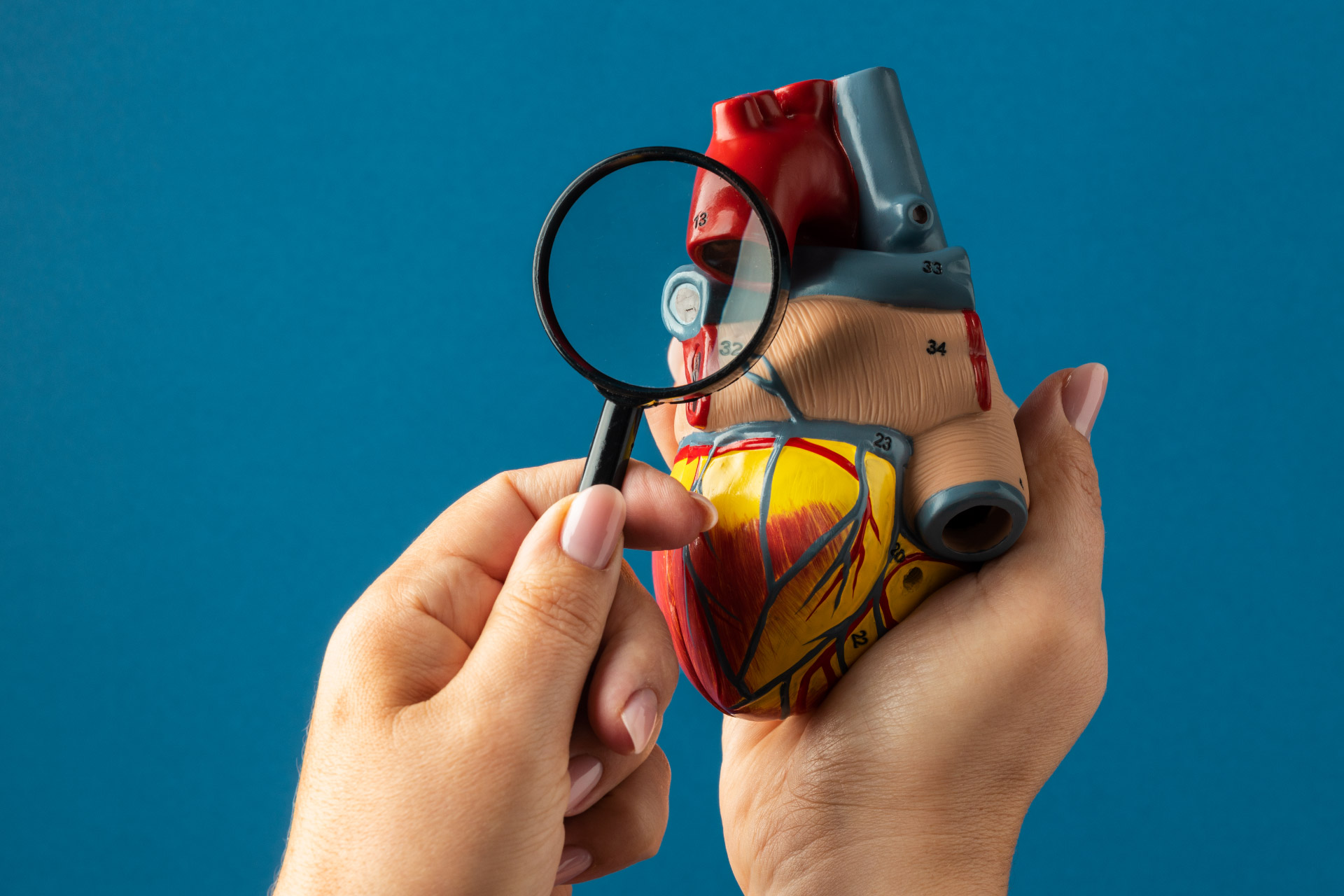Heart Health | 8 min read
Pulmonary Stenosis: Symptoms, Causes, Diagnosis, and Complications
Medically reviewed by
Table of Content
Synopsis
The artery that delivers blood to your child's lungs to absorb oxygen is affected by pulmonary artery stenosis (narrowing). Right ventricular pressure can increase to levels high enough to harm heart muscle to compensate for this insufficient blood supply. Many various therapies can be effective, but your child might require another procedure in the future.
Key Takeaways
- syncope, angina, and dyspnea are common symptoms of pulmonic stenosis, they typically do not manifest until maturity
- The murmur gets stronger right away with Valsalva's release and inspiration
- pulmonary stenosis can cause right-sided cardiac failure if left untreated
The pulmonary artery, a significant blood channel that connects the right ventricle to the lungs, is narrowing due to pulmonary stenosis. Blood absorbs oxygen in the lungs and transports it to the body. The pulmonary artery narrows, making it challenging for blood to reach your child's lungs. Your child's body and heart can't operate as they should if they aren't getting enough oxygen.
The central pulmonary artery and its left or right branches may narrow, and when this happens, the right ventricle has to work harder to pump blood through the constriction. The cardiac muscle may become harmed as a result of this over time.
This disease can cause right-sided cardiac failure if left untreated.
Pulmonary Artery Stenosis Affects Whom?
It is not common to have pulmonary stenosis. Congenital heart disease may affect kids with other cardiac conditions or happen by itself (without other heart defects). It also occurs after some heart procedures or could do so. Online doctor consultation is best if you are confused.
Additional Read: Heart Attack SymptomsPulmonary Stenosis Symptoms
The severity of the stenosis affects the symptoms (narrowing). Your youngster might not have any symptoms if the narrowing is minor. However, your youngster might go through the following when the narrowing gets worse:
- Respiration difficulty
- Fatigue
- fast or erratic breathing
- Fast heartbeat
- Swelling of the abdomen, face, eyes, feet, and ankles
- Fainting or dizziness
- Lips, fingers, and toes with cyanosis (blue discoloration)
- Reduced capacity for exercise (unable to keep up with other kids or play as much as usual)

Pulmonary Stenosis Causes
Some people have pulmonary artery stenosis from birth and also have issues with their heart walls, valves, or other components. Others who are born with pulmonary stenosis are heart-problem-free. The syndrome might also arise from uncommon disorders or following heart surgery.
- Pulmonary stenosis causes that are congenital (exist from birth)
People are born with pulmonary artery stenosis in 40% of cases but are otherwise healthy.
It can cause pulmonary artery stenosis in 2 to 3 percent of patients. Other congenital (present at birth) heart problems such as:
Tetralogy of Fallot is a heart disorder in which your child has four issues that prevent regular blood flow [1].
The condition known as pulmonary atresia occurs when the pulmonary valve, which joins the right ventricle to the pulmonary artery, never forms. Consequently, no blood can go to your child's lungs.
- Truncus Arteriosus: Instead of the typical two heart arteries, one united heart artery allows oxygen-rich blood and blood with low oxygen levels to mix.
- Aortic Valve Stenosis: This condition causes less blood to leave your child's heart and enter their body.
- A hole in the wall separating your child's two upper heart chambers (atria) called an atrial septal defect allows blood with and without oxygen to mix. A hole in the wall dividing your child's two lower chambers (ventricles), known as a ventricular septal defect, might result in too much blood flowing to the lungs.
- The two main arteries that carry blood away from your child's heart are transposed in opposite positions. As a result, it reduces the amount of oxygen reaching your child's cells and inhibits proper blood flow.
- A patent ductus arteriosus connects your child's pulmonary artery and aorta. Too much blood flows to the lungs if it doesn't properly seal after birth.
Other factors that may contribute to pulmonary stenosis include:
- When a birth parent contracts rubella while pregnant, your child has rubella syndrome, a collection of heart and other health issues.
- Williams syndrome is a collection of anomalies that can harm the heart and other organs in your child.
- Alagille syndrome, which harms the liver and heart.
- Large blood vessels can become damaged by an inflammation called Takayasu's arteritis.
- Issues that externally pressure the pulmonary artery of your child.
Online doctor consultation is recommended if you want to know whether you have pulmonary stenosis.

Pulmonary Stenosis Causes Due to Surgery
Some patients who undergo surgery develop pulmonary artery stenosis as a result. These consist of:
- Transplanting a lung
- Surgery to enhance the blood flow through your child's heart or correct a congenital heart defect
- Banding of the pulmonary artery. This increases your child's artery to lessen blood flow to their lungs.
Pulmonary Stenosis Tests and Diagnosis
During an examination, the medical professional for your child could detect abnormal heartbeats (a murmur). If this occurs, they may order more testing, which may consist of:
- The electrocardiogram (ECG or EKG) is a test that captures the electrical changes that take place throughout a heartbeat, reveals irregular heartbeats (arrhythmias), and finds stress on the heart muscle.
- A chest X-ray is a test to determine the size and shape of the heart, lungs, and pulmonary arteries.
- An echocardiogram is a test that creates a moving image of the heart's muscles and valves using sound waves.
- Cardiac magnetic resonance imaging (MRI): A test that displays the blood flow through your child's heart and blood arteries using three-dimensional imagery.
- Using a computer, a CT scan turns many X-ray images of your child's heart into cross-sectional views. Your child's doctor can see your child's heart's structure and blood flow by administering IV contrast (dye).
- Cardiac catheterization: A procedure in which a tiny tube (a catheter) is inserted into a vein or artery and advanced toward the heart. A healthcare professional can take heart X-ray images, measure pressure fluctuations, and assess the oxygen content in the blood.
- A dye-enhanced X-ray of the pulmonary arteries and veins in your heart is called pulmonary angiography.
- Perfusion scan: A test in which a trace amount of radioactive material is injected. The efficiency of each lung's blood flow is displayed via a specialized machine.
A congenital heart specialist will be recommended if your child's doctor diagnoses them with pulmonary valve stenosis. This kind of healthcare professional is qualified and equipped to diagnose your child's heart condition and request the required testing, medical attention, heart surgery, and subsequent checkups. When more tests are required, they may order them.
The healthcare professional for your child may categorize their ailment as Type I, II, III, or IV. These are divisions based on the number of narrow places along the artery and their locations.
Pulmonary Stenosis Control and Treatment
The ideal course of action for pulmonary stenosis treatment will depend on your child's symptoms and other elements. Treatment is typically not necessary for mild to moderate pulmonary artery branch narrowing. Yoga for the heart, and a good heart-healthy diet, these things can help. You can ask any cardiologist for tips on how to have a strong heart. Treatment is necessary in severe cases, though.
Treatments for pulmonary artery stenosis include:
Balloon Dilation (angioplasty)
The caretaker of your child will:
- Insert a balloon dilation catheter into the artery's constricted region
- Carefully inflate the balloon by increasing pressure as you move from low to high
- Enlarge the constricted artery
- Remove the balloon after deflation
Placement of a Stent And Balloon Expansion (Preferred Method)
The caretaker of your child will:
- Place a balloon-expandable stent over the restricted area of the artery
- After mounting it on a balloon angioplasty catheter, put a sheath around the stent
- Set the stent into place
- The stent-balloon angioplasty assembly should be sheathed
- Expand the stent after the balloon has been expanded to the proper pressure, then secure it
Cutting Balloon
This balloon resembles a typical one. The balloon does, however, have tiny blades going up and down its length. The balloon's blades are activated when your child's surgeon inflates it, and they then cut through the constricted space. It results in a bigger aperture and makes the artery simpler to dilate.
Many people who don't have a congenital cardiac condition benefit well from this alternative. However, over several months, the artery can narrow again in up to 21% of persons. In surgery to treat pulmonary stenosis, surgeons employ a variety of techniques. The decision is based on the severity of the stenosis. They also scan the nearby vessels and other buildings.
Complications with the Therapy
Most patients report improved narrowing after balloon dilation. But in up to 15% to 20% of cases, the artery can gradually constrict once more. It indicates that the operation will have to be repeated by the child's provider. Researchers are developing different varieties of balloons in the hopes of producing better and more durable outcomes.
Consequences of balloon dilation include:
- A ruptured pulmonary artery
- Dissection of the pulmonary artery
- A ruptured pulmonary artery
- Respiratory edema (swelling)
- It might even be lethal
Stent usage complications include:
- Clots of blood
- Ventricular irregularities
- Stents being implanted incorrectly or moving about
- Requirement for artery expansion (rare)
Advantages of the Therapy
Stents are preferred by medical professionals because they:
- They are instantly effective to 96 percent.
- They are successful in maintaining an artery open throughout the long term.
- They can increase the narrow part's size twofold.
- Compared to surgery or balloon dilation, they are more economical.
- They are superior to balloon angioplasty in effectiveness.
When providers may decide to use a balloon angioplasty rather than a stent:
- The health of your child is quite alarming.
- The anatomy of your child is intricate.
- Your youngster is relatively young.
Get online doctor consultation at Bajaj Finserv Health and get answers to all your questions!
Frequently Asked Questions
References
- https://www.nationwidechildrens.org/conditions/tetralogy-of-fallot
Disclaimer
Please note that this article is solely meant for informational purposes and Bajaj Finserv Health Limited (“BFHL”) does not shoulder any responsibility of the views/advice/information expressed/given by the writer/reviewer/originator. This article should not be considered as a substitute for any medical advice, diagnosis or treatment. Always consult with your trusted physician/qualified healthcare professional to evaluate your medical condition. The above article has been reviewed by a qualified doctor and BFHL is not responsible for any damages for any information or services provided by any third party.





